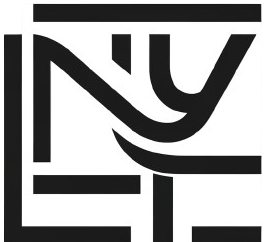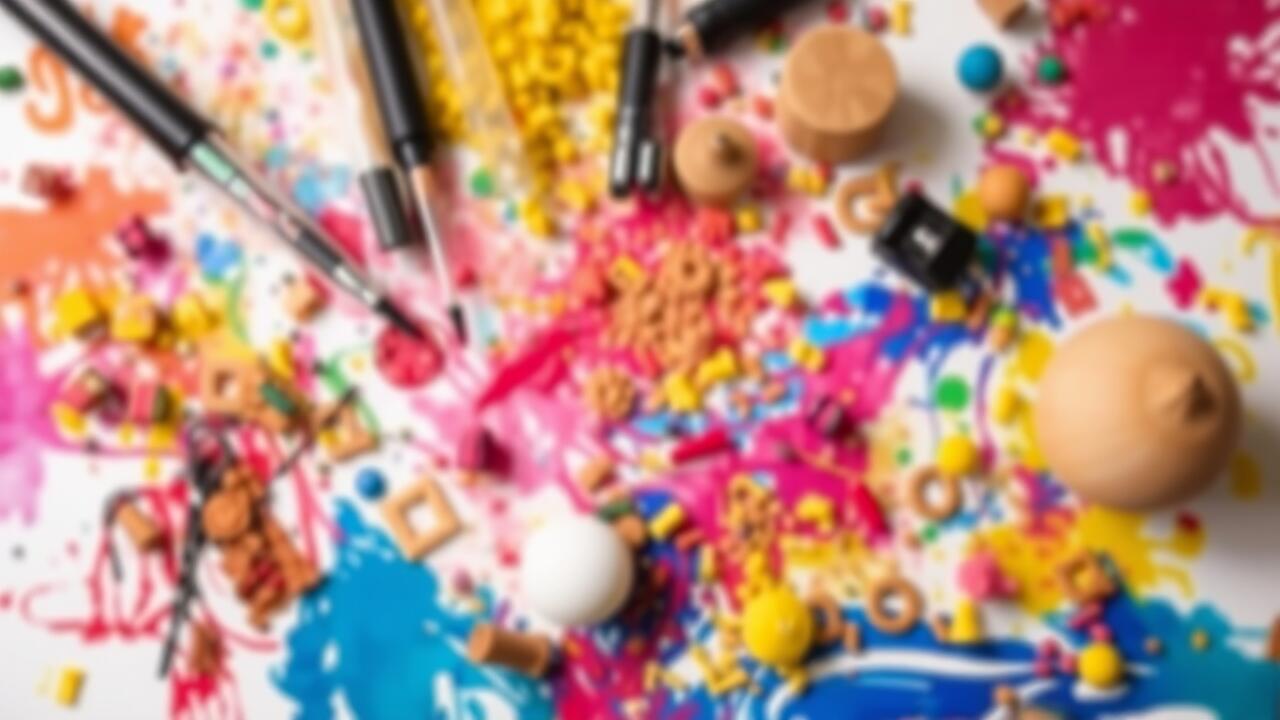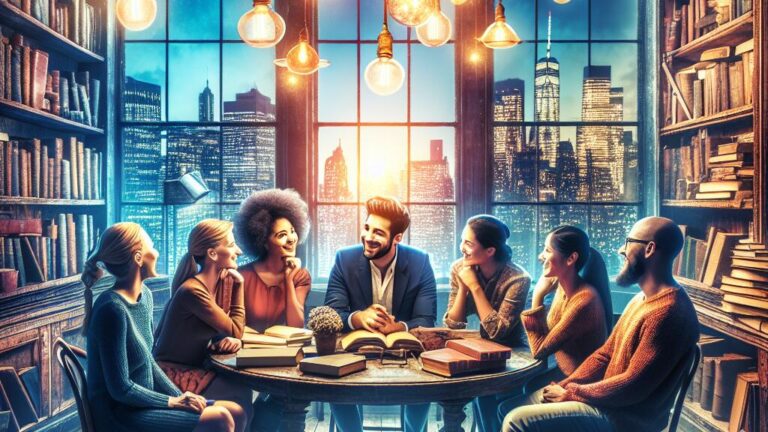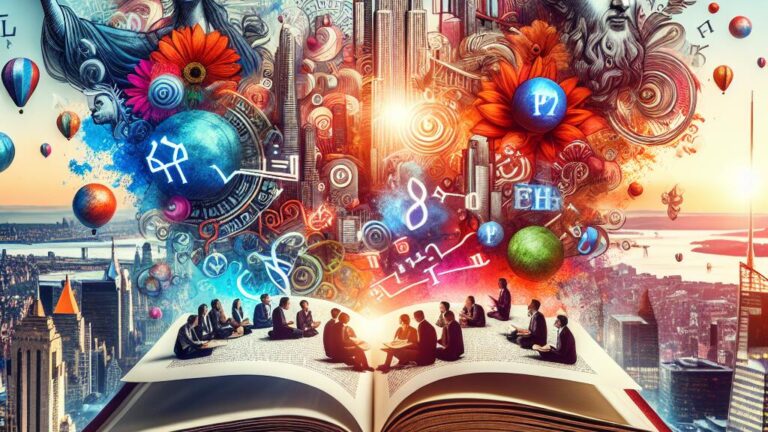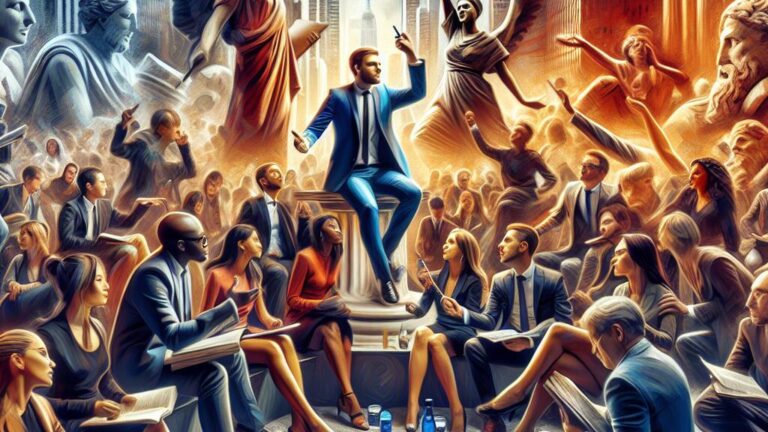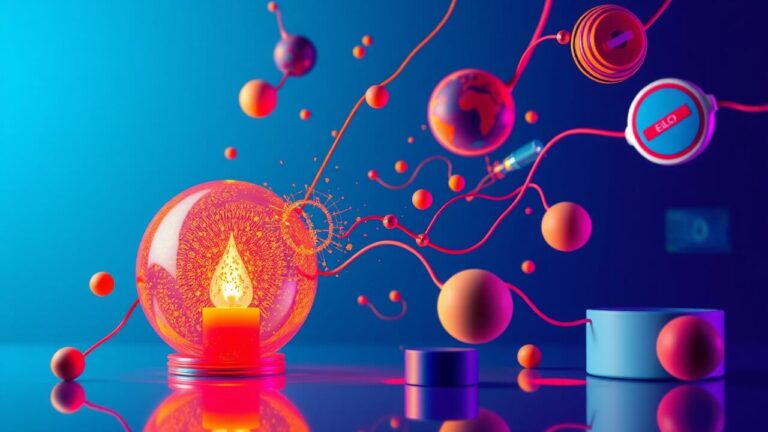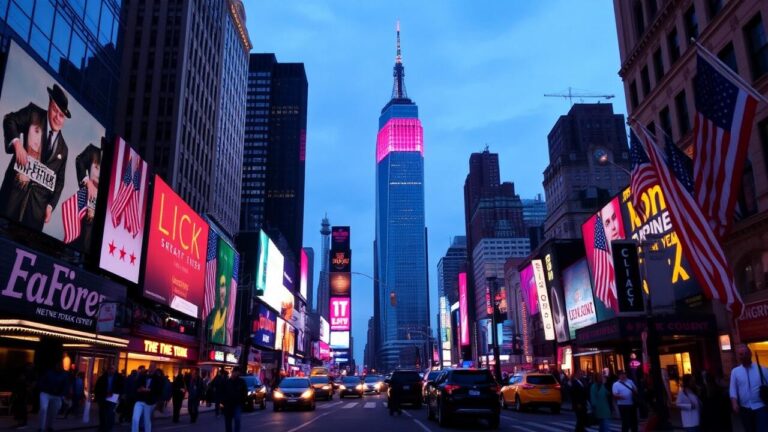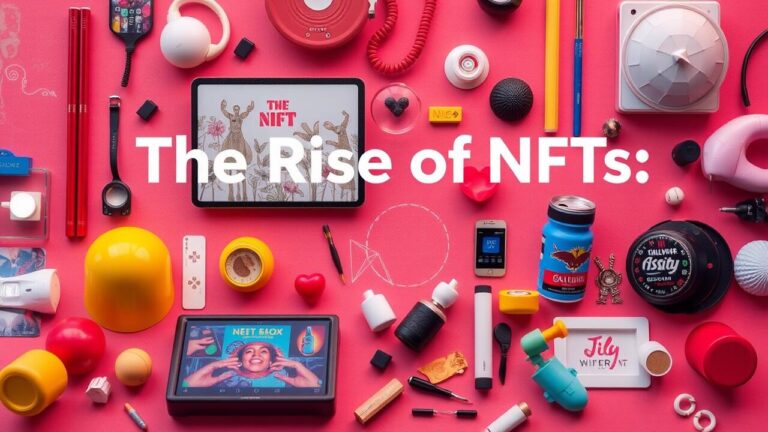Blurring the Boundaries: Mixing Traditional and Digital Techniques in Art
Table Of Contents
Blurring The Boundaries: Mixing Traditional And Digital Techniques In Art | Blurring the Boundaries by Mixing Traditional and Digital Techniques in Art
Key Takeaways
- Merging the lines between classic and contemporary artistic practices involves understanding the concept of integration.
- Investigating conventional artistic methods reveals their historical significance and techniques.
- The emergence of electronic artistry signifies a shift in creative expression and accessibility.
- The combination of classic and electronic approaches leads to innovative and diverse artworks.
- Advantages of merging art forms include expanded creativity and new possibilities for expression.
- Obstacles in combining artistic styles highlight the complexities of adaptation and acceptance.
Blurring The Boundaries: Mixing Traditional And Digital Techniques In Art | Understanding the Concept of Blurring the Boundaries
Blurring the boundaries: Mixing traditional and digital techniques in art represents a significant shift in the way artists approach their work. As digital art continues to evolve, the lines between traditional and digital mediums have become increasingly blurred, allowing for a rich interplay between techniques like digital painting and established artistic movements. Contemporary art thrives on this fusion, with digital artists creating innovative digital artworks that challenge conventional definitions of art. This blending of mediums not only enriches the creation of art prints but also opens up new avenues for visual art expression. The emergence of these hybrid forms highlights the vibrant possibilities that arise when artists embrace the interplay of traditional methods with modern technology, showcasing the diverse potential within the realm of artistic creation.
Blurring the Boundaries: Mixing Traditional and Digital Techniques in Art | The Evolution of Artistic Techniques
Artistic expression has transformed significantly throughout history, reflecting shifts in culture and technology. The emergence of movements like pop art and avant-garde has inspired visual artists to explore new mediums. As creative arts evolved, the integration of media art and algorithmic art began to blur the boundaries between traditional techniques and modern innovations. This merging has led to a fresh approach to artistic inspiration, enabling artists to use digital tools alongside classic methods, such as illustration and abstract paintings.
The evolution of artistic techniques showcases a dynamic interplay between the old and the new. Performance art and other expressive forms increasingly incorporate digital elements, enriching the visual arts landscape. Artists now embrace a hybrid approach, merging traditional practices with contemporary technology. This fusion allows for a broader spectrum of creativity, reflecting the changing nature of artistic expression and promoting diverse avenues for innovation in Blurring the Boundaries: Mixing Traditional and Digital Techniques in Art.
The Impact of Technology on Traditional Art
Technology has reshaped traditional art forms, allowing artists to redefine their techniques and meanings. By blending methods, creators explore avant-garde movements that challenge conventional practices. Digital platforms enable the integration of colored pencil drawings with digital sketches, resulting in unique texture and depth within abstract painting and concept art. These innovations have given rise to a new era in modernist art, where traditional paintings coexist with digital enhancements, pushing the boundaries of creative expression.
The accessibility of digital tools has empowered artists to expand their repertoire and explore new media. Capturing inspiration through paint and canvas can now be supplemented with digital art software, inviting a seamless fusion of distinct styles. Artists can produce intricate paintings that combine traditional techniques with digital manipulations, elevating their artwork beyond the conventional. This blurring of boundaries has sparked a fresh dialogue in the art community, where the distinction between traditional and digital methods becomes increasingly irrelevant.
Exploring Traditional Art Techniques
The blending of traditional techniques with modern tools has sparked a revolutionary shift in the arts, creating a vibrant intersection between classic and contemporary styles. Artists harness photography alongside conventional methods, producing hybrid artworks that incorporate pixels into their illustrations and graphic designs. This digital revolution encourages contemporary artists to explore aesthetic dimensions previously unimagined, integrating interactive art elements with traditional craftsmanship. With advancements like 3D printing, the possibilities for merging mediums expand, allowing for innovative expressions that challenge conventional boundaries. Such developments exemplify the essence of Blurring the Boundaries: Mixing Traditional and Digital Techniques in Art, inviting audiences to engage with art in dynamic and immersive ways.
Key Characteristics of Traditional Mediums
Traditional artistic mediums possess distinct characteristics that set them apart in the creative landscape. Techniques such as painting with oils or acrylics, drawing with colored pencils, and sculpting with clay contribute to a tactile and immersive experience. Art exhibitions showcasing these mediums often highlight the skilled craftsmanship involved, allowing viewers to appreciate the nuances of texture and process. As artists explore the idea of blurring the boundaries: mixing traditional and digital techniques in art, these unique qualities of traditional mediums can create a rich foundation for innovative expression.
The use of traditional materials also embodies a strong connection to historical practices and artistic heritage. Each medium offers specific attributes that influence the final artwork, shaping everything from color saturation to depth. As artists venture into the realm of blurring the boundaries, these artistic mediums serve as a reference point for blending with digital elements. The interplay creates a blurry blend of techniques that expands the possibilities within artistic spheres, inviting both creators and audiences to experience the evolving essence of art.
Famous Traditional Artists and Their Contributions
Throughout history, renowned traditional artists have made significant contributions that continue to influence contemporary artistic practices. Their innovative approaches established foundational artistic styles that inspire today’s exploration of visual arts mediums. These artists often experimented with traditional art mediums, pushing the limits of their artistic vision. They laid the groundwork for blurring the boundaries: mixing traditional and digital techniques in art, encouraging future generations to integrate unconventional art forms into their practices.
Iconic figures such as Vincent van Gogh and Pablo Picasso have demonstrated how artistic experimentation can lead to powerful visual narratives. Their works exemplify a commitment to evolving artistic practices, inviting viewers to engage in a dialogue that transcends time. As the art world adapts to include digital performance art and emerging digital art forms, the legacies of traditional artists remain essential to understanding how blurring the boundaries: mixing traditional and digital techniques in art can foster artistic innovations.
The Rise of Digital Art
The rise of digital art has revolutionized artistic exploration, allowing creators to blend traditional art forms with cutting-edge technology. Artists now utilize digital brush techniques alongside traditional painting methods, resulting in innovative new art styles that enhance the mark-making texture of their work. The digital canvas serves as a versatile platform, enabling the manipulation of shapes and colors in ways that were previously unattainable. This fusion exemplifies the concept of blurring the boundaries: mixing traditional and digital techniques in art, creating a unique space for artistic content creation that engages a broader audience. As the creative landscape evolves, the integration of traditional and digital methodologies continues to inspire artists to push their boundaries further.
Defining Digital Art and Its Techniques
Digital art encapsulates a wide range of artistic expressions that utilize technology as a core component. It often involves a digital canvas where artists can apply a digital color palette to create vibrant visual arts. Modern artists have embraced digital sketch techniques that blend seamlessly with traditional paintings, contributing to the evolution of hybrid art forms. These practices challenge the traditional art world by redefining what constitutes serious art through innovative combinations of artistic elements.
Blurring the Boundaries: Mixing Traditional and Digital Techniques in Art opens up exciting new avenues for creativity. The integration of traditional and digital methods allows for unique outcomes that engage audiences in novel ways. Digital artworks can incorporate textures and strokes reminiscent of traditional techniques while enhancing them with the flexibility of digital tools. This fusion not only enriches the final product but also encourages a dialogue between established art forms and contemporary practices.
| Technique | Description | Tools Used |
|---|---|---|
| Digital Painting | Creating artwork on a digital medium using software that mimics traditional painting. | Adobe Photoshop, Corel Painter, Procreate |
| 3D Modeling | Generating a three-dimensional representation of a surface or shape using specialized software. | Blender, Autodesk Maya, ZBrush |
| Photo Manipulation | Editing and enhancing photographs to create surreal images through the use of digital tools. | Adobe Photoshop, GIMP, Affinity Photo |
| Vector Art | Creating images using vector graphics, which allows for flexible and scalable designs. | Adobe Illustrator, Inkscape, Affinity Designer |
Prominent Figures in the Digital Art Scene
Contemporary artists have played a significant role in shaping the digital art scene, showcasing innovative art forms that blur the boundaries between traditional and digital techniques. These creators harness digital painting software to craft eye-catching illustrations that challenge traditional boundaries and redefine the artistic experience. Through their work, they celebrate the artistic evolution that results from blending different art forms, leading to the emergence of hybrid art that captivates audiences.
Prominent figures in digital art bring a wealth of creativity to the forefront, utilizing both traditional mediums and modern technologies. Their approaches highlight the value of alternative art forms, as they push the limits of what is possible in the art world. By experimenting with various techniques, these artists create compelling visual narratives that resonate with viewers, prompting a reevaluation of the way art is perceived and experienced in today’s evolving landscape.
The Fusion of Traditional and Digital Methods
Blurring the Boundaries: Mixing Traditional and Digital Techniques in Art opens up innovative pathways for artists to explore and create. Traditional art includes timeless practices like painting and traditional printmaking, which can seamlessly integrate with digital mediums to produce new art forms. Techniques such as layering dark-colored elements with digital textures create striking distortions, enhancing the overall depth and complexity of a piece. By employing basic shapes in both traditional and digital formats, artists can craft realistic portraits that resonate with viewers. This coexistence of traditional and digital mediums enriches artistic experiences, offering a dynamic digital exhibition space where true art can thrive.
Techniques for Mixing Mediums
Artists today embark on an artistic journey that embraces the concept of Blurring the Boundaries: Mixing Traditional and Digital Techniques in Art. By incorporating traditional miniature painting techniques with modern digital tools, artists can create dynamic textures that bring a fresh perspective to their work. The use of digital brushes allows for greater experimentation, merging styles that speak to both traditional art galleries and the contemporary art world. This fusion opens up new artistic territories, inviting artists to reimagine their methods and challenge the norms of their craft.
The playful interplay between traditional mediums and digital techniques expands the creative landscape for artists. For instance, some contemporary works take inspiration from the fluid movements of Hollywood dance sequences, merging the precision of traditional techniques with the spontaneity of digital art. Makeup artists have also embraced this blending of methods to enhance their visual storytelling in innovative ways. By exploring various techniques, artists can create captivating pieces that resonate with diverse audiences, enriching their own artistic lane along the way.
Case Studies of Successful Blurred Boundaries
Several contemporary artists successfully exemplify the concept of Blurring the Boundaries: Mixing Traditional and Digital Techniques in Art. One notable case is the work of a traditional artist who integrates pencil sketches with digital creations. This unique combination allows for hyper-realistic textures that enhance the depth of the artwork, captivating audiences within the diverse art world. Such artworks not only showcase technical skill but also represent a shift toward more innovative expressions.
Another compelling example involves an artist who uses digital platforms to reinterpret classic techniques while retaining the essence of traditional mediums. This approach results in popular art pieces that resonate with both traditional and modern art enthusiasts, thereby fostering artistic growth. By seamlessly merging these methods, the artist draws attention to the possibilities that lie in Blurring the Boundaries: Mixing Traditional and Digital Techniques in Art, encouraging others to explore their own creative paths.
- Artists are increasingly blending painting with digital technology, resulting in captivating hybrid artworks.
- Many creators utilize social media to share these innovative pieces, reaching wider audiences and nurturing community engagement.
- Collaborative projects between traditional and digital artists are emerging, further enriching the art scene.
- Workshops and classes that focus on mixing mediums are becoming more popular, encouraging skill-sharing among artists.
- Art exhibitions that highlight blurred boundaries are attracting attention, showcasing the evolution of artistic expression.
- This fusion fosters discussions around the authenticity and value of traditional versus digital art.
- The trend draws inspiration from various cultures, leading to a more inclusive and diverse art narrative.
Benefits of Blurring the Boundaries
Blurring the boundaries: Mixing traditional and digital techniques in art opens up a wider array of creative possibilities for artists. By incorporating elements like canvas texture brush strokes with modern landscape aesthetics, artists can seamlessly weave together distinct art forms, enriching their portfolios. This fusion not only enhances traditional artworks but also allows for innovative nature paintings that push the boundaries of the traditional art debate. Techniques that blend traditional techniques and digital manipulation elevate high art, inviting a diverse audience to engage with the main creative arts in fresh and inspiring ways. As these artistic talents navigate this new terrain, they redefine what it means to create in today’s evolving art landscape.
| Art Style | Medium | Benefits |
|---|---|---|
| Mixed Media | Paint + Digital Elements | Increased depth and texture |
| Collage | Paper + Digital Manipulation | Enhanced storytelling through juxtaposition |
| Photorealism | Traditional Drawing + Digital Effects | Creates hyper-realistic visuals |
| Augmented Reality Art | Physical Installation + Digital Overlay | Interactive experience for the viewer |
Expanding Creative Possibilities
Blurring the Boundaries: Mixing Traditional and Digital Techniques in Art allows artists to transcend the limitations of their chosen mediums. By incorporating digital enhancements into traditional artworks, such artists can create compelling imagery that appeals to a broader audience, including non-art people. This fusion fosters an environment where professional artists experiment with diverse techniques, ultimately expanding the boundaries of what can be classified as art.
The integration of various mediums opens up new avenues for creativity and expression. Traditional mediums can be reimagined through digital platforms, resulting in unique pieces that reflect contemporary themes and complexities. This synthesis not only engages those familiar with art sociology but also invites others who might typically view art as “not-art” to explore and appreciate the innovations within the field. Blurring the Boundaries: Mixing Traditional and Digital Techniques in Art reveals endless possibilities for artistic exploration and dialogue.
Enhancing Audience Engagement
Engaging audiences has taken on new dimensions with the advent of digital advancements. Blurring the Boundaries: Mixing Traditional and Digital Techniques in Art allows artists to reach different corners of the artworld. Traditional artists can attract art enthusiasts by integrating their styles into graphic images and illustration pieces. This fusion creates a dialogue between physical art forms and the digital realm, drawing in viewers from diverse backgrounds and inviting them to explore various artistic expressions.
This innovative approach enhances audience interaction and fosters a deeper emotional connection to the artwork. Circles of art enthusiasts are no longer confined to galleries; instead, they span online platforms where Blurring the Boundaries: Mixing Traditional and Digital Techniques in Art resonates widely. By showcasing the collaborative efforts between traditional and digital mediums, artists can captivate audiences and challenge perceptions of what art can be in our rapidly evolving landscape.
Challenges in Merging Art Forms
Merging traditional and digital art forms presents a myriad of challenges that artists must navigate. The process of blurring the boundaries between these mediums often requires adapting to unconventional techniques, which can feel alien to those rooted in traditional practices. Artists come from different backgrounds, bringing unique styles influenced by their experiences; this diversity can sometimes lead to clashes in artistic vision. For example, delicate watercolor paintings might struggle to integrate with digital processes that involve chalk-like brushes, raising questions about authenticity and technique. The artistic community must grapple with these complexities while exploring new avenues of art production, often pushing boundaries and redefining what it means to create in a modern context. Balancing the essence of traditional methods with the innovative spirit of digital techniques remains a continuous journey for many.
- Artists must familiarize themselves with new software and tools to effectively merge mediums.
- Collaboration between artists of different backgrounds can result in conflicting styles and ideas.
- Authenticity concerns may arise when traditional art forms are transformed digitally.
- The need for technical skills in both mediums can create a steep learning curve.
- Maintaining the emotional connection to traditional methods while embracing digital innovation is challenging.
- Audience reception can vary, with some viewing hybrid forms as less legitimate.
- Finding a balance between creative expression and the integrity of original techniques is essential.
Conclusion
The concept of Blurring the Boundaries: Mixing Traditional and Digital Techniques in Art has transformed the artistic landscape, allowing creators to craft unique portraits that reflect an avant-garde dream. This approach harnesses the features of contemporary mixed-media, merging techniques from various backgrounds to outline new artistic possibilities. Artists in the digital era are discovering innovative methods that not only enhance their work but also redefine the perception of art itself. Blurring the Boundaries: Mixing Traditional and Digital Techniques in Art invites a reexamination of how we understand creativity, pushing the envelope of what is possible in art.
FAQS
How do digital mediums coexist with traditional art spaces in contemporary visual arts, while pushing the boundaries of established techniques?
In today’s art world, the blurred lines between traditional and digital mediums have created an innovative landscape where artists explore new techniques. Digital art offers unique advantages such as a digital colour palette and the capability to work on a digital canvas, which has led to the rise of digital paintings and 3D printed artworks. As artists navigate this weaving area, they find that the integration of traditional art forms with modern techniques blurs boundaries in the creative process, allowing them to push the limits of their art work and redefine the performance of visual arts.
In what ways can digital mediums coexist with traditional art spaces, and how is this relationship pushing the boundaries in the visual arts?
Digital mediums coexist alongside traditional art spaces by creating immersive experiences that blend physical and digital realms. The digital canvas offers artists new opportunities to explore textures, like the incorporation of a dark-colored layer that engages viewers differently. As contemporary art pushes boundaries, it encourages artworld people to rethink the definitions of both traditional and performing arts. This evolution is evident in how American art is transforming, inviting artists from different lanes to experiment with contrasting techniques.
How have the visual arts—particularly in the context of artists using different mediums—evolved to include both traditional and digital techniques while pushing boundaries?
The visual arts have evolved significantly—across various platforms—as artists navigate the art artist lane, blending traditional practices with digital techniques. This integration has pushed boundaries within the arts, creating innovative forms that challenge conventional norms.
How do artists incorporate diverse mediums in the visual arts to create innovative works that push the boundaries of traditional definitions?
Artists in the visual arts have evolved their practices to include a blend of traditional and digital techniques, allowing them to create innovative works that challenge and redefine the boundaries of arts to encompass new formats and experiences.
How are artists redefining the visual arts—to include both traditional and digital techniques in their creative process?
Artists are redefining the visual arts—to embrace a synthesis of traditional and digital techniques, allowing them to explore new avenues of expression and innovation that enhance their artistic practice.
